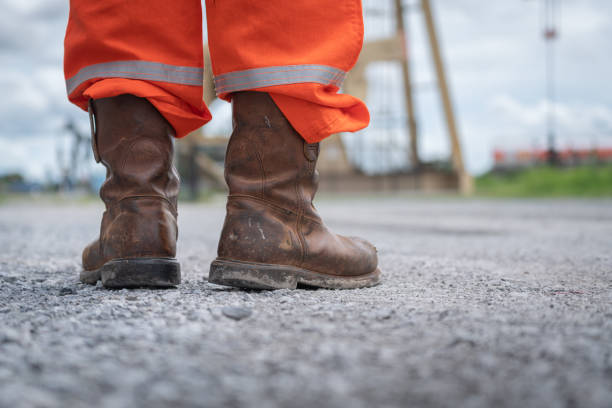Foot protection in the workplace often remains overlooked, yet it is an essential aspect of ensuring occupational safety and preventing injuries. The feet, despite their resilience, are vulnerable to various hazards present in many work environments. From heavy machinery and falling objects to slippery surfaces and electrical hazards, the risks to foot safety are diverse and significant.
This article explores the importance of foot protection in the workplace, highlighting its role in safeguarding employees, enhancing productivity, and promoting overall well-being.
Workplaces across industries pose diverse risks to foot safety. In manufacturing, construction, and warehouse settings, heavy machinery, tools, and equipment pose threats of crushing injuries. In environments where chemicals are present, exposure can lead to burns, corrosion, or other severe damage to the feet. Slippery surfaces in kitchens, hospitals, or laboratories increase the likelihood of slips, trips, and falls, risking foot injuries. Even in offices, potential hazards like loose wires or objects on the floor can cause accidents if not properly managed.

Several types of protective footwear are available to address specific workplace hazards.
1.Steel-toe Boots/Shoes: These are designed to protect the toes from impact and compression injuries. They feature a reinforced toe cap typically made of steel or composite materials, providing a barrier against heavy objects or equipment accidentally dropped or rolling over the feet. Steel-toe footwear is commonly used in construction, manufacturing, warehouses, and other industrial settings where there's a risk of crushing injuries.
2.Chemical-resistant Boots: These boots are crafted from materials that provide resistance to a wide range of chemicals, including acids, bases, solvents, and oils. They safeguard against chemical splashes, spills, or contact, preventing burns, corrosion, or other harmful effects on the feet. Chemical-resistant boots are essential in laboratories, refineries, chemical plants, and other environments where hazardous substances are handled.
3.Anti-Slip Footwear: Designed with specialized tread patterns and materials, anti-slip footwear enhances traction on slippery surfaces such as wet floors, greasy surfaces, or areas prone to oil spills. They reduce the risk of slips, trips, and falls, which are common causes of foot injuries in workplaces like kitchens, hospitals, restaurants, and factories.
4.Electrical Hazard (EH) Boots/Shoes: EH-rated footwear is specifically designed to protect against electrical hazards such as electric shock and electrocution. They feature non-conductive materials in the soles and heels, preventing electrical currents from passing through the body to the ground. EH footwear is essential for workers in construction, utilities, maintenance, and other occupations where exposure to live electrical circuits is a risk.
5.Thermal Insulated Boots: Designed to provide insulation against extreme temperatures, thermal insulated boots keep feet warm in cold environments and protect against frostbite or cold-related injuries. They are commonly worn by workers in outdoor occupations such as agriculture, forestry, construction, and cold storage facilities.
Investing in foot protection yields numerous benefits for both employers and employees. By reducing the frequency and severity of foot injuries, protective footwear minimizes workplace accidents and associated costs, including medical expenses, worker compensation claims, and productivity losses due to absenteeism. Furthermore, prioritizing employee safety fosters a positive work environment, enhances morale, and strengthens employer-employee trust, leading to improved job satisfaction and retention rates.
In conclusion, foot protection is an indispensable aspect of workplace safety that merits attention and investment from employers and employees alike. By recognizing and mitigating potential hazards, implementing appropriate protective measures, and fostering a culture of safety, organizations can create environments where employees feel secure, productive, and valued. Prioritizing foot protection not only safeguards physical well-being but also reinforces the foundation of a resilient and sustainable workforce for the future.
Copyright © Hebei Sinotools Industrial Co.,Ltd. All Rights Reserved | Powered by  Sitemap
Sitemap